DNY59/iStock via Getty Images
Introduction
I’ve been an active self-directed investor for over 40 years and I have never seen our economy go from great to tanked in such a short period of time. What a difference 18 months has made. Excepting our chief executive, most everyone else understands that the current state of our economy and its current direction is going to be hard on a lot of families, in some cases, very hard. However, one of the truisms I’ve learned over the last 40 years is that investment opportunities can be found regardless of the state and direction of the economy. We are very likely to have a once-in-a-generation opportunity to pick up fixed income securities at bargain basement prices sometime in the next 6 months.
Interest Rates
A short 18 months ago, the economy was humming along with the lowest rates in roughly 50 years, falling civilian unemployment, and inflation under the 2% Federal Reserve target rate. In contrast, today, companies are laying off workers or planning layoffs for the near future, inflation at 8.5%+ (highest in over 40 years), and rising interest rates currently well more than double the rates we had 18 months ago.
US Bureau of Labor Financial Times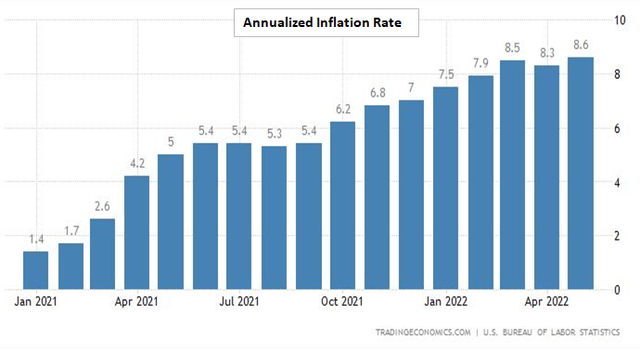
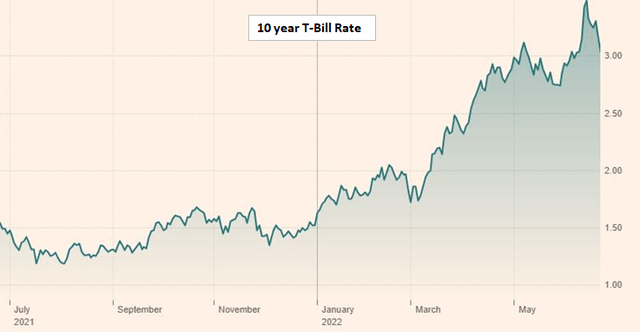
The bull market in fixed income securities is clearly over. That is the bad news. You can, however, turn some of that into good news with a little patience and due diligence.
The Federal Reserve (Fed) has committed to combat inflation with both tools they have available. Raise short-term interest rates and halt the buying of securities to allow them to roll off their books as they mature (Quantitative Tightening). Both of these Fed actions will put upward pressure on interest rates. The bottom line is that we are going to be in a rising rate environment for the near future. We will very likely see another 75-basis point rise in July and at least a 50-basis point rise in September. After September, it’s not so clear what additional actions the Fed will pursue. We are already seeing some impact due to rising interest rates. Single and multi-family building permits are down and residential mortgage applications have fallen by about a third. With another 125-basis point rise between now and middle of September, we are likely to see more significant slowing of economic activity. It is possible we will see the Fed pause or slow the rate of increase in short-term rates after September.
I’ve got cash reserves sitting on the sidelines now that I’m hoping to put to work in fixed income securities. At this point, I’m planning for September but Fed actions may move that time frame earlier or later. To mitigate the timing uncertainty, I’m getting ready early with a list of baby bonds and preferred shares.
Baby Bonds List
Over the last couple of months, I’ve put together a list of baby bonds for possible investment. I say “possible” because it depends on how the individual bond prices settle out after another 125-basis point increase in short-term rates. The list contains about 60 issues and I expect to invest in roughly half of those 60 issues. To put some objectivity into the process of selecting the issues I will choose for investment, I’ve graphed the yield versus credit rating. This allows me to select those securities that are offing a higher-than-average yield for its credit rating category. The list is in the form of an EXCEL spreadsheet and the column titles should be self-explanatory.
I had to split the baby bond table in half, the other half is below.
Readers should note that, because baby bonds are exchange-traded debt securities, the price fluctuates intraday. Therefore, the prices listed will be different than what you will find the securities trading at this coming week. Most of the issues are trading below par ($25) with a handful still trading at or above par. After another couple rounds of Fed short-term interest rate increases, I expect that all bonds in the list above will be trading below par. I generally do not invest in bonds selling above par unless there is a special circumstance that compensates for the higher than par value price.
All of the baby bonds in the above lists are included in the chart below. The chart, as presented here, is simply a picture pasted into the article. In my EXCEL spreadsheet, the dots on the chart are linked to the corresponding security in the lists above. As mentioned above, I use the chart below as an aid to select those bonds that yield more than the average for their credit rating group. I may ultimately decide to invest in a security that falls below the power curve fitted line, but at least, I have sufficient information to make that decision.
Author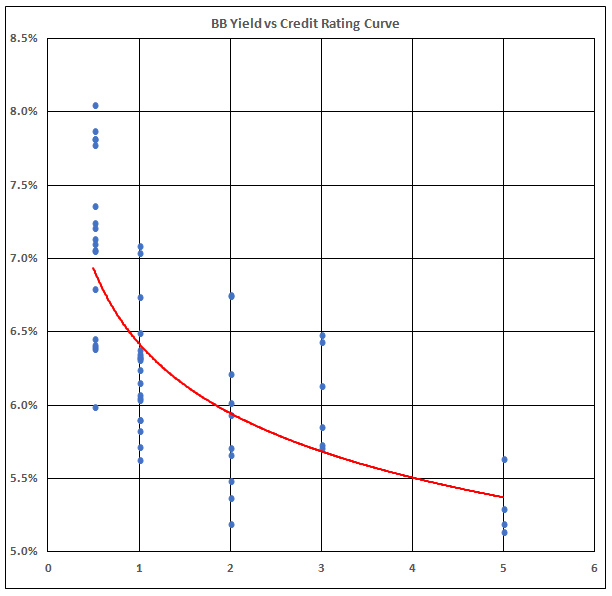
One possible quibble readers may have is my choice to assign a value of 0.5 for the pseudo credit rating for non-rated securities. It is somewhat arbitrary and, had I assigned a value of 0 instead, the fitted power curve would have a bit less negative slope near the vertical axis (between 0 and 2). This would effectively lower the curve a bit for the 1 rated (BBB-) securities, putting a few more issues above the line versus below.
Preferred Shares
Though preferred stock issues are technically stock, because they pay a fixed dividend and most have no maturity date, preferred shares behave much more like long-term bonds than they do common stock. I have but a few preferred share issues listed, because I find preferred shares, for the most part, do not offer much more risk protection versus common stock. Yes, preferred shares are a notch higher in the capital stack, and issues that are cumulative do have to pay out accrued dividends before common stock dividends are paid, but the board of directors can cease preferred share dividends just as easily as common stock dividends. Failure to make baby bond distributions generally leads to default on the issue and a major impact to a company’s credit rating. Baby bonds clearly have a lower risk of not returning principal and a break in your income stream. With that said, below is a list of the preferred shares I’m considering.
I probably should note here that the yellow highlights in both the baby bond list and the preferred stock list are to remind me that these issues are either fixed to floating rate or rate reset securities. This is pretty important to understand for anyone contemplating investing in this type of security. Similar to the baby bond list, I have a chart of current yield versus credit rating though it is rather sparse due to the few issues being considered.
Author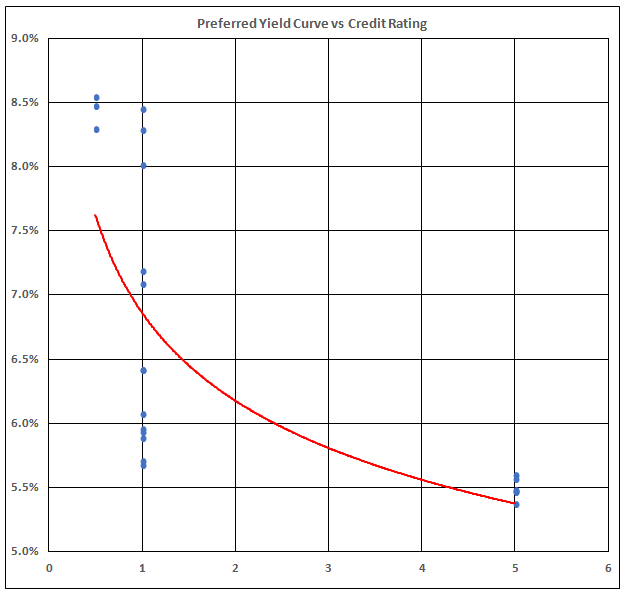
It is also important to note that preferred shares typically do not have issue-specific credit ratings so the ratings in the list and chart are for the issuing company.
Conclusion
I’m planning on retiring sometime in the third quarter of this year. It will be the second time I attempted to retire; the first attempt (at 55) was derailed by boredom. This time I think I’ll stick with being retired. So, for me, the Fed’s plan to raise rates and reverse quantitative easing to combat inflation is a welcome change. I’ve got cash I need to put to work and I’ve already got a sizable stock portfolio. The opportunity to invest in fixed income at decent rates of return is a very welcome change from the historically low fixed income rates of return of just 18 months ago.
Hopefully, for those of you in the similar situation of looking for lower risk fixed income opportunities, this article was helpful.


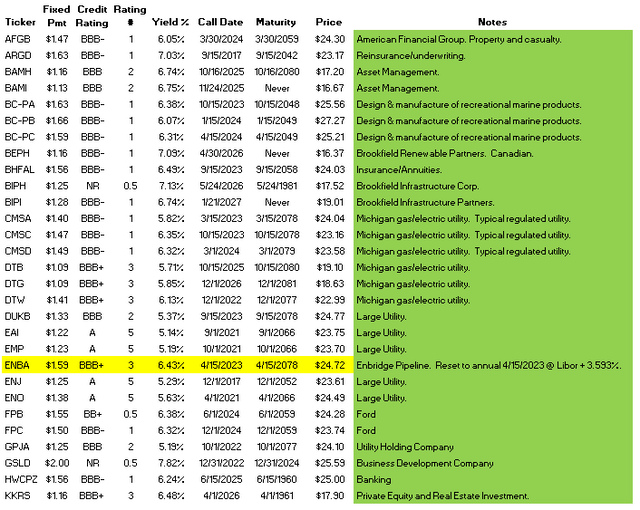
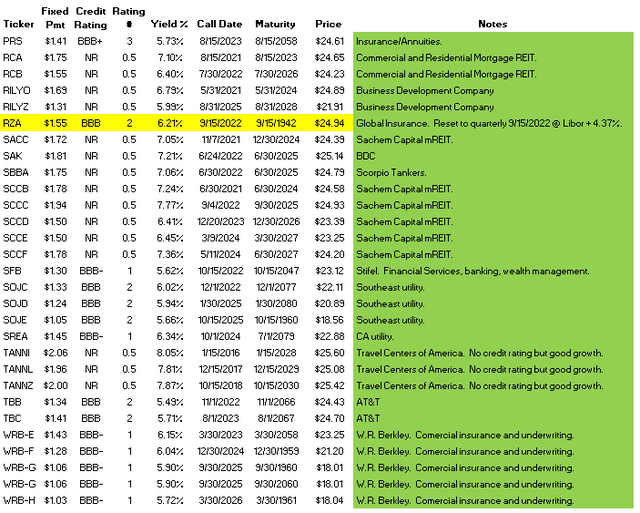
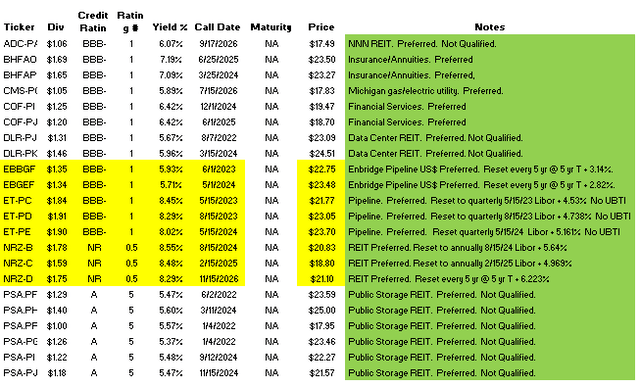
Be the first to comment